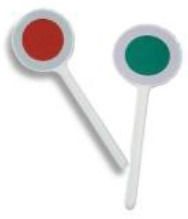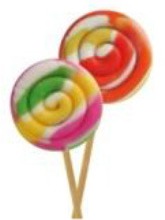Table 2.
Examples of renaming and story-matching activities.
| Renaming | |
|---|---|
The adult showed M.M. a signaling disk (X) and asked him to rename it.
|
M.M.: “A lollipop.” If the child had renamed the object in a non-metaphorical way (e.g., “flour” renamed as “bread,” or “bag”), the adult might have proposed an appropriate solution attributable to another child. “You know, another child told me so: “flour”-“snow.” |
| The adult asked M.M. to justify the new label (e.g., “lollipop”) chosen for renaming. | M.M: “It has the same round shape. The color can be red as a strawberry-flavored lollipop, or green as mint-flavored lollipop.” |
| The adult asked M.M to select or draw a picture that matched the label chosen for renaming. | M.M chose the image that matched the new label.
|
| The adult asked M.M to phrase the association between the object (X) and the label he chose (Y) as a “X is Y” type of metaphor. | M.M.: “The signaling disk is a mint-and-strawberry flavored lollipop.” |
| Story-matching | |
| The adult told M.M. the following story: “At school, the pupils are lining up to enter into the classroom. Alice is the smallest child of the group….” Which one of the following endings of the story is the most appropriate, “Alice is a ladybug” or “Alice is a giraffe” ? |
M.M. chose the appropriate alternative. (“Alice is a ladybug”). |
